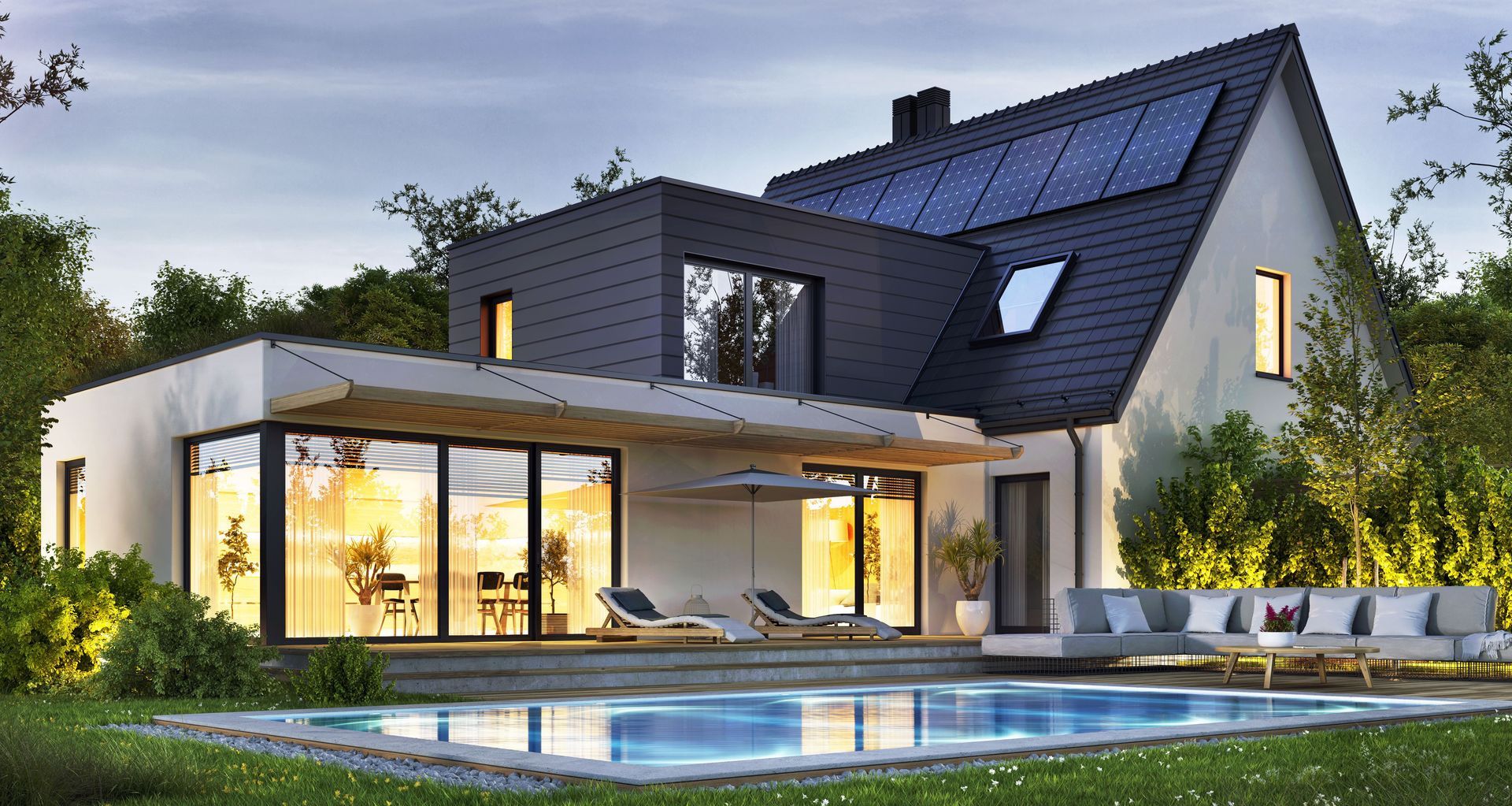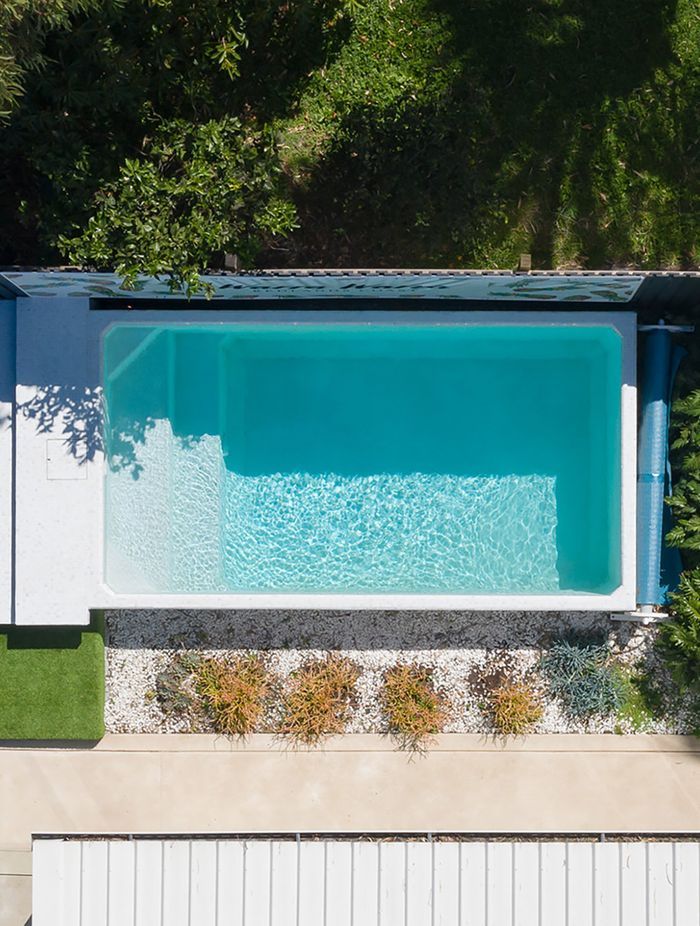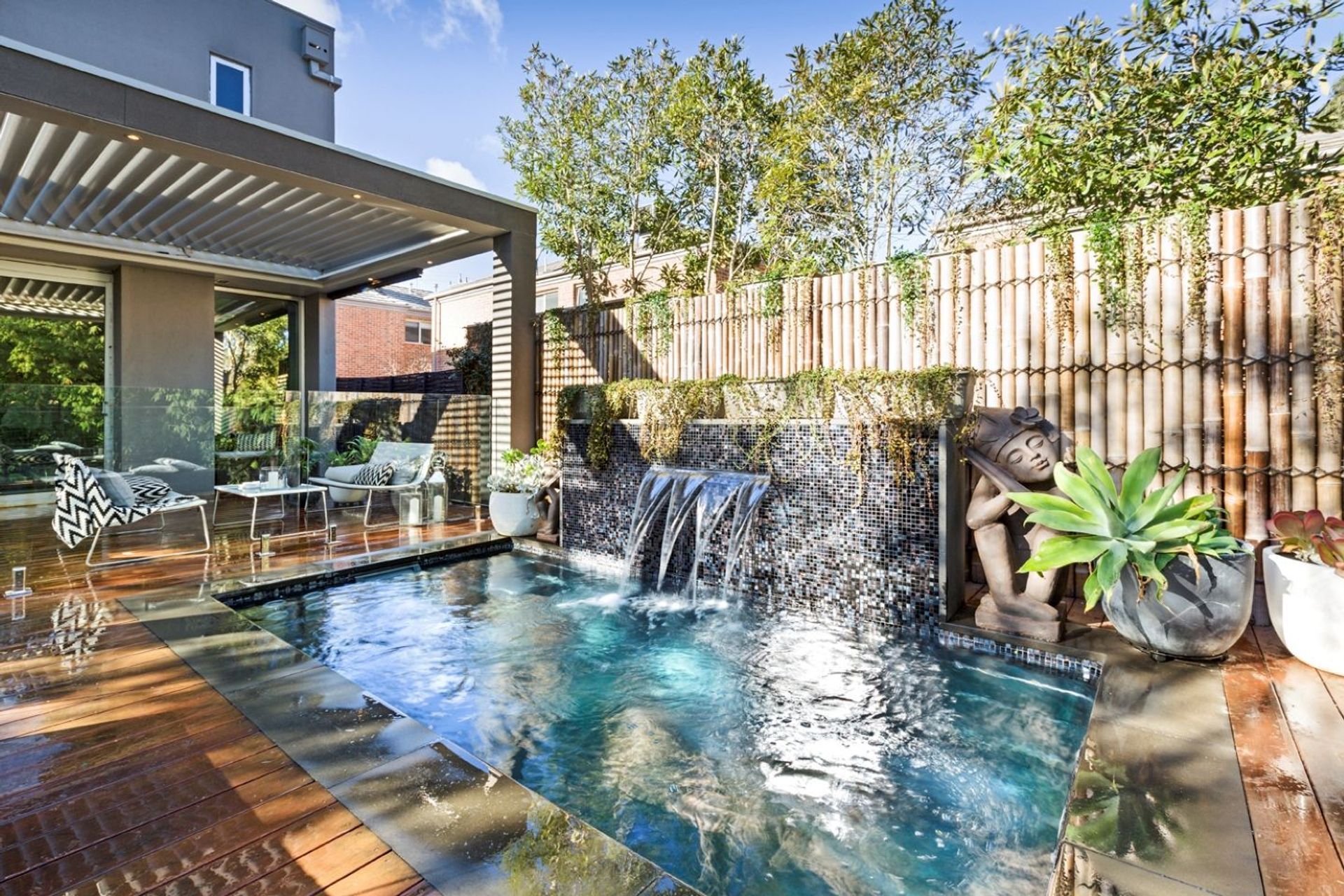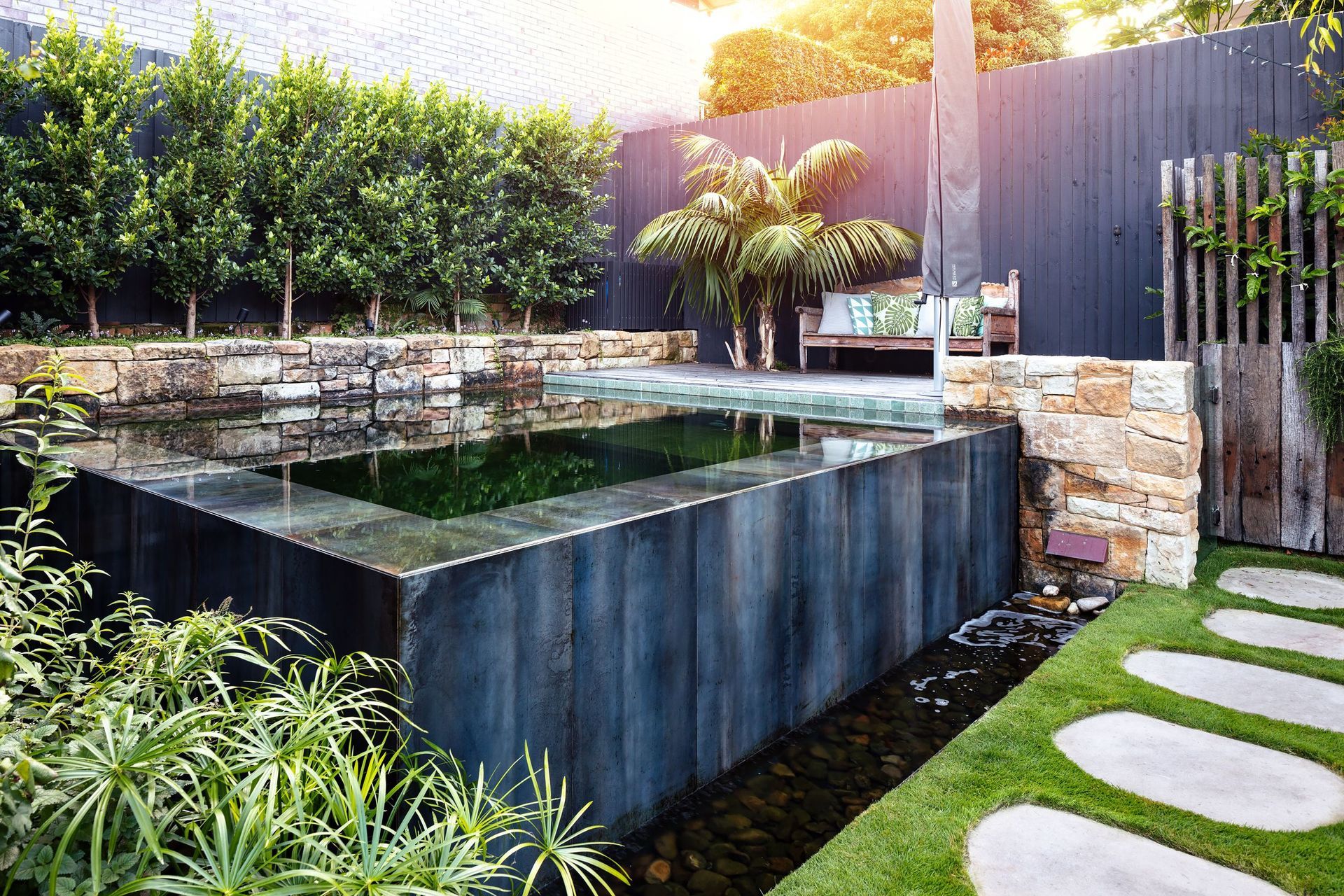Things to consider about pool design in Australia

Most people have a general idea of what their new swimming pool will be used for, be it leisure or exercise. Once that’s known, it becomes much easier to research the different types of pools that are available. This decision will also determine what depth would be best suited, how much it will be used and ultimately, whether or not it is worth the investment, given the value it will add to the property. If your desires for a pool are still strong, the following questions are worth considering, as they can all impact the final design and project cost.
Is the site suitable for building a pool?
Steep terrain, difficult ground conditions and unstable soil types can escalate the costs of building a pool in the same way they increase the cost of building a house. A level site is ideally what you’re after for a swimming pool. If your property is in an earthquake-prone area or is prone to flooding, there may be a requirement to have an engineer provide a report to determine the suitability of the site for a pool.
How much space is required to build a pool?
Pools can generally be built to any size or shape preferred by the homeowner. However, there are often strict requirements, particularly in urban areas, about how close a pool can be located to a property’s boundary. Due diligence is required, which includes checking the property’s title, as well as any relevant district plans and state regulations, to ensure you are aware of all relevant constraints.

What are the different types of pools?
There are many types of pools to suit different needs. In Australia, fibreglass and concrete are the most common in-ground options, each offering unique benefits and drawbacks depending on your budget and goals.
- Above-ground: Affordable and easy to install, these pools are a popular choice for temporary or seasonal use.
- In-ground: Permanent and highly customisable, these pools are a staple for luxurious outdoor living spaces.
- Container: Made from repurposed shipping containers, they are an eco-friendly and modern pool option.
- Saltwater: These pools use salt to generate chlorine, offering a gentler alternative to traditional chlorine pools.
- Chlorine: A classic option, they rely on chlorine to keep water sanitised and safe for swimming.
- Natural and living: Chemical-free and environmentally friendly, they use plants and natural filters to maintain clean water.
- Fibreglass in-ground: Quick to install and low maintenance, these pools are durable and come in pre-formed shapes.
- Concrete in-ground: Custom-built and long-lasting, they allow for endless design possibilities but require more maintenance.
Fibreglass vs. concrete pools: what is more cost effective?
Concrete pools are generally more costly than fibreglass pools, especially with complex designs. Concrete pools are popular because they can be tailored to suit any size or shape as they are built on-site. They’re also structurally powerful and visually stunning. Finishing options are vast and range from pebbles to tiled finishes but they can again be more expensive. Compared to fibreglass, concrete pools are more of an undertaking in terms of construction and timeframes. Built on-site, they can easily take several months to complete. Maintaining concrete pools can also be more involved and demanding than maintaining fibreglass pools due to the porous nature of concrete. This allows algae and bacteria to grow within the pool more quickly.
Related article: Choosing the best pool for you — concrete vs fibreglass pools compared
What are the benefits of fibreglass pools?
Fibreglass pools are quick and relatively easy to install and are usually the more cost-effective option when compared to concrete pools. They are constructed off-site and installation on-site can take as little as one week, depending on weather conditions. They're also easy to clean due to their smooth surface reducing ongoing maintenance costs. The soft gel coat surface of fibreglass pools is also a popular option for those with children as it is non-abrasive against the skin. A potential downside for fibreglass pools is a lack of versatility in design. Generally, there is a set range of shapes and sizes to choose from, which are somewhat limited in dimension as they must be transported to the site.
When are above-ground vinyl-lined pools the best option?
Prefabricated above-ground pools are another popular option, mainly due to the limited installation costs compared to in-ground pools. The vinyl lining is non-abrasive and smooth against the skin and like fibreglass, doesn’t foster algae growth, requiring less maintenance in the long run. However, vinyl linings generally last anywhere from around five to nine years, after which time they need to be replaced to maintain the integrity of the pool, which can be off-putting for some. Vinyl linings are generally very thin — around 30mm — so throwing objects or having pets in the pool can potentially damage the surface. You can also have in-ground vinyl-lined pools, but the installation costs rise to around the same as installing a fibreglass pool. An in-ground vinyl-lined pool will require similar maintenance to the above-ground version. Above-ground pools can reduce the costs associated with pool fencing if they are higher than the required fencing standards.

Are container pools cost-effective?
Container pools are another emerging option for above-ground pools in Australia. Constructed from shipping containers, insulated and lined with moulded fibreglass, they are a cost-effective option, constructed off-site and delivered in one piece. They are also becoming extremely fashionable with respect to repurposing and sustainability.
Fresh vs. saltwater pools: what’s better?
A common misconception about saltwater pools is that they don’t require chlorine. This isn’t the case. Fresh and saltwater pools are chlorinated to keep the water safe, clean and hygienic. The difference is that saltwater pools create their own chlorine, while chlorine needs to be added to a freshwater pool. In chlorinated pools, chlorine is added to the water in the form of a liquid or tablet. It can also be dispensed into the pool through an automated pump system. Saltwater pools have similar pump and filtering systems to freshwater chlorinated pools, except they also incorporate a chlorine generator. The generator essentially turns the salt into chlorine, keeping the water clean while eliminating the need for chlorine to be manually added to the pool.
What are living and natural pools?
Like green walls and roofs, living and natural pools are a form of living architecture that regulate themselves organically, without the need for chemical intervention.
What is a living pool?
A living pool is a body of freshwater that naturally regulates and cleans itself with biofiltration systems. It works and behaves like natural bodies of water and the ecosystems around them. A living pool requires no chlorine, treatments or chemicals, remaining clean and hygienic independently. It is an organic version of a swimming pool utilising living water. Living pools differ from natural pools, which require a regeneration zone of live flora and fauna. A living pool incorporates an underground bio and phosphorous filter that purifies the water, keeping it clean and alive.
What is a natural pool?
Natural pools are also bodies of living freshwater, however, they are regulated in a more organic manner than living pools. The central design feature of a natural pool is the regeneration zone, which is planted with aquatic plants that oxygenate the water and filter it through their root systems. Due to the aquatic plants in the regeneration zone, natural pools often appear as if they blend in with the surroundings, becoming more like a natural feature of the landscape than a traditional pool. It provides for a seamless natural aesthetic, that when done well, looks absolutely breathtaking.
Along with plants, fish can be added to a natural pool, creating a new and unique experience for many. The fish inside also helps to keep the insects at bay. Both natural and living pools are designed to suit individual sites and can be set at different depths and designed in different shapes and sizes. Often, an existing pond or pool can be converted into a natural or living pool working with an environment that’s already established.
Related article: Lush escapes — a selection of Australia's premier pool landscaping ideas

Heated vs. non-heated pools: what are the options?
Heating a residential pool or not is a personal choice and will depend on budget, how often the pool be used throughout the seasons and whether heating the pool will actually increase the enjoyment of the pool. There are many options for pool heating, ranging from solar panel systems to complex contemporary offerings.
Luxury relaxation: the benefits of hot tubs
Incorporating a hot tub into any landscape design is a guaranteed crowd-pleaser for young and old. It’s hard to beat a long soak in an outdoor hot tub at any time of year and with so many designer tubs now available, the choices are endless. Whether you’re looking for a tub as a focal point or one that you barely realise is there, the choices are vast and exciting.
Spas, like hot tubs, are a great design feature, and with options ranging from portable to in-ground and custom-made spas, you’re not limited by choice. Perhaps it's a tub with lounge or hydrotherapy seats? Maybe it’s massage jets for ultimate relaxation? Or perhaps it's a spa designed to seat up to half a dozen people? Whatever you want to use it for, a spa will change any outdoor area.
Architects often choose to make a feature out of a spa or hot tub, mainly if it is separate or not connected to the main pool area. Looking out towards a magnificent vista against the warm setting sun is precisely the magical scene that can be created. To take things a step further, a home sauna can create the perfect accompaniment to a spa or hot tub. Outdoor saunas are also popular in Australia, with many styles and models available.

Pool ideas for small spaces: lap and plunge pools and swim spas
Lap pools and plunge pools, as well as swim spas, can be great options for smaller sections where there is a strong desire for a pool. The previously mentioned container pools can also be used in this way. These types of pools can be incorporated into much smaller areas while still offering the satisfying experience of swimming. Where space is at a real premium, other elements may have to be sacrificed to make room for a pool.
When this is the case, it can pay to engage a swimming pool design professional to ensure the best pool landscaping ideas are explored and chosen. If there simply isn’t space for a swimming pool, but a body of water still appeals, rock pools or water features can be a great compromise, delivering the ambience of water without taking up too much room.
Related article: How much does a plunge pool cost in Australia in 2024?
Pool ideas for larger spaces: infinity pools and custom-built designs
Where space and budget is not an issue, the options become as endless as one’s own imagination. Whether it’s a cantilevered clifftop pool, a pool that flows from indoors to out or an infinity pool complete with an in-built spa — one can really make a statement and create an idyllic swimming pool environment that will be the envy of all.
Related article: Pool fencing ideas that combine style and safety
Exquisite swimming pool design ideas to get you underway
A swimming pool is a definitive feature for any house and if you’re going to invest the time and energy to create one it’s important to achieve the outdoor pool of your dreams. Whether it’s used as your own space for exercise, a backyard pool for the kids or an entertaining outdoor space for the summer pool party - you can make it work for you with great planning and perseverance.
This article was updated on the 20th of December 2024.
Explore a range of high-quality swimming pools from trusted Australian suppliers on ArchiPro
